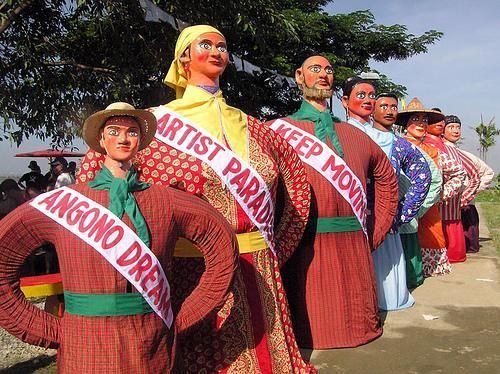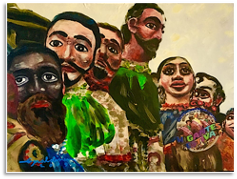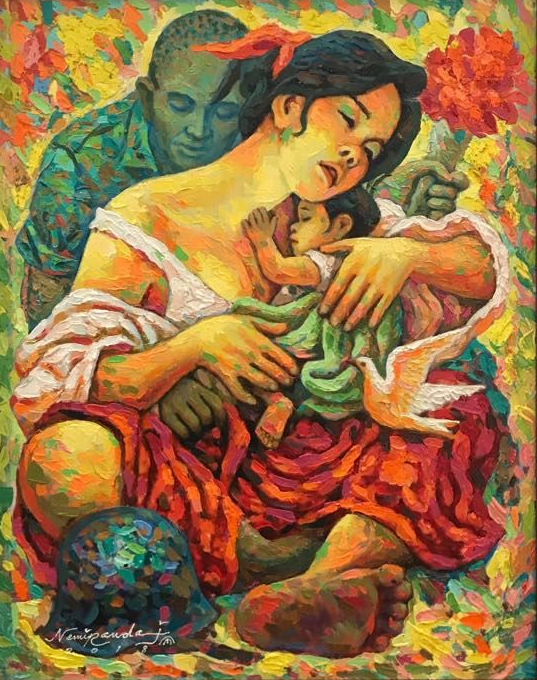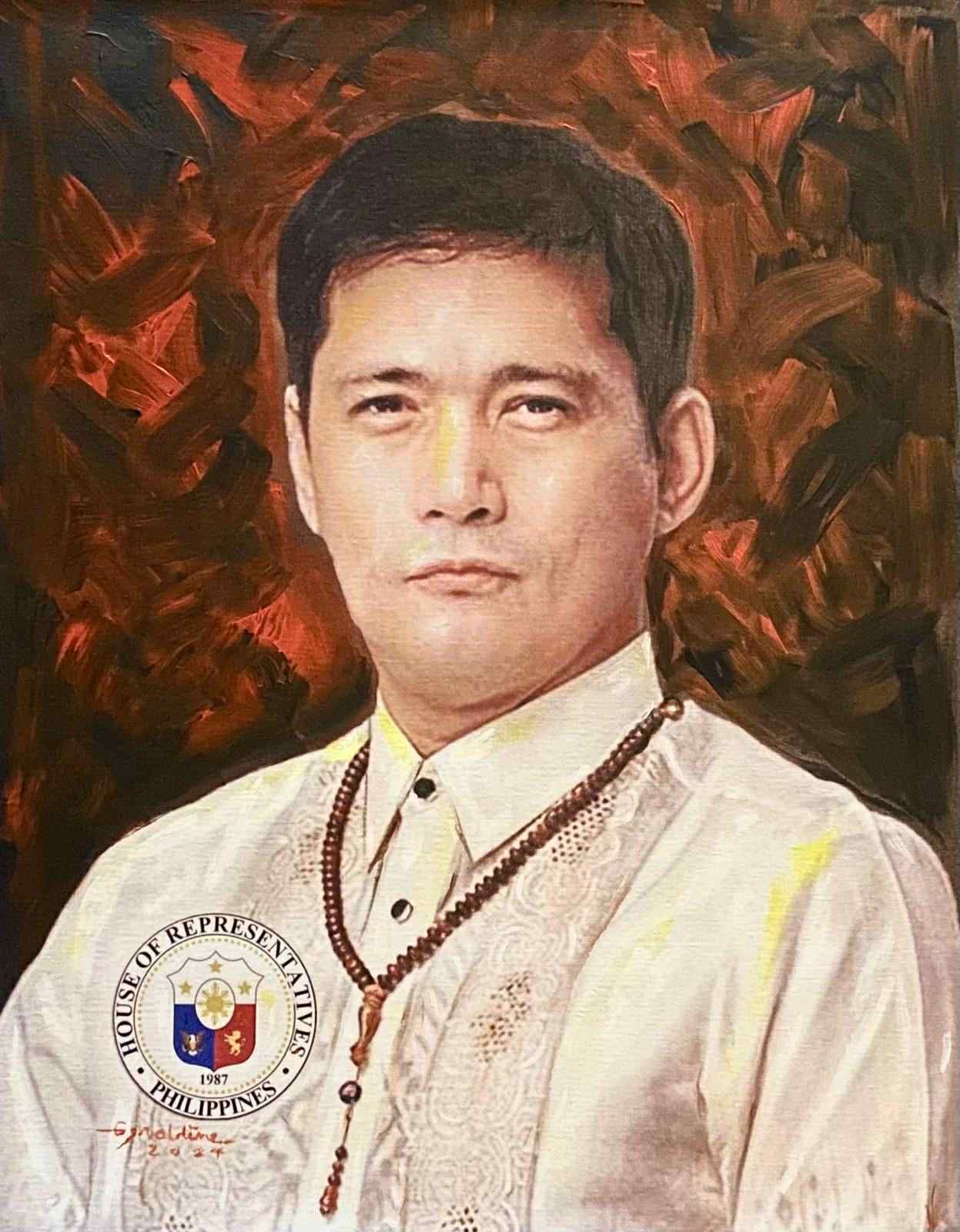
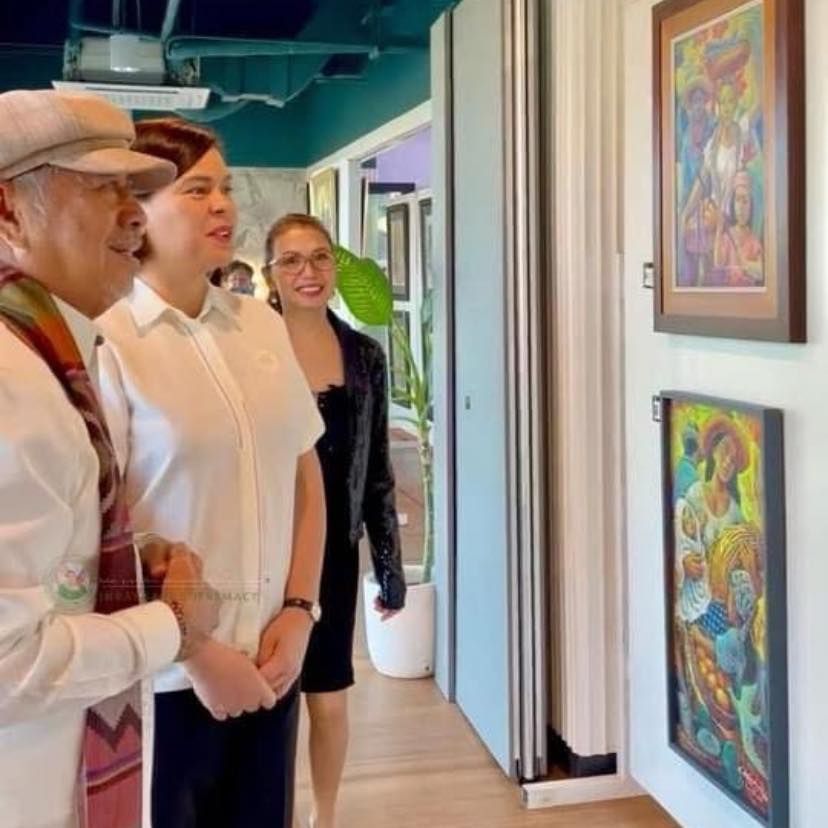
Click the video weblink below to watch the event in full.
https://www.facebook.com/EuropePinoyMediaNetwork/
Inday Sara Duterte @ Nemi Miranda Art Expo & Artbook Launching Authored by Geraldine Hernandez-Martens, Ph.D.
Coming Soon :
Art Expo & Artbook Launching 2025-2026. Almost 100 artists participated in this said coffee table size, hardbound, full-color artbook with almost 400 glossy paper pages.
Eurointermedia International in cooperation with Europe Pinoy Media Network & Giselle Sanchez in "Go Green Worldwide Campaign" to build School for Gifted Children & Children with Special Needs.

Aangono Higantes are giant paper-mache creations endemic in the history and culture of Angono. For adults, they symbolize joy and festivity, especially when they are moving, swaying, and dancing. For kids, however, they evoke amusement or fear during the Higantes Festival celebrated on November 22-23 by the Municipality of Angono, Rizal, known as the Art Capital of the Philippines.
The festival is celebrated alongside the feast of St. Clement, Angono’s patron saint of fishermen. This year, the activities feature tiangge, play, band and rock concerts, a talent search, a dance contest known as “Parehadora Festival,” a parade, and an art exhibit welcoming the centennial of National Artist for Painting Carlos “Botong” Francisco in 2012.
Local folklore discussed in the research books of UP emeritus professor Ligaya Tiamson-Rubin noted that the Higante was used as a symbol of agrarian protest during the waning years of Spanish colonialism.
A UP art studies thesis written by Lisa Ito also considered Higante as the first political effigy in the country.
Based on the story, the face of the first Higante was similar to the landlord’s image who, at that time, decided to hire farm workers from Morong, Rizal instead of Angono natives. His bulging eyes and his hands encircling his waist making a boastful and arrogant stance, caught the sarcasm and satire of Angono natives.
In the 1940s, National Artist Carlos “Botong” Francisco used the Higante to punctuate the festive parade of the town fiesta to counter the gloom hovering over post-World War II Angono.
In his research done three years ago, James Owen Saguinsin, a native of Angono and professor of art studies at the Far Eastern University, even claimed that the Higante was a
In the ‘70s, the son of the Higante couple, which the people called “Anak ng Higante” or “Maliit na Higante,” was introduced in the public’s consciousness and comprised what is now known as the Original Higante Family. The head of the Higante is made of paper-mache while the body used to be created using bamboo strips.
Today, most Higante bodies are made of thin aluminum because bamboo has become scarce. This also makes the Higante lighter, which makes it easier to carry, especially when it is transported to various parts of the country.
In Angono, a group of craftsmen called HIMASS or Higante Makers and Sculptors Society take the lead role in the reproducing these images. Artists Nemi Miranda, the Blanco Family, and Toti Argana also have their own Higante.
Last year, during the Feast of San Isidro, Toti introduced the Maliliit na Higanteng Bahay Kubo or the vegetables identified in the Filipino folk song. The Higante was also used during the interment of artist and Balaw-Balaw Restaurant founder Perdigon Vocalan about a decade ago.
Vocalan is credited with exhibiting in Japan and abroad the Higante which was folded, detachable and could be assembled in a few minutes.
Artist Wire Rommel Tuazon also used the heads of the Higante in one of his art installations exhibited at the Cultural Center of the Philippines in early 2000.
Last year, the Higante became an electoral tool as dozens of these images bearing the faces of politicians like Jejomar Binay and Noynoy Aquino were used in campaign gatherings.
Some artists, however, criticize the use of the Higante as a “giant walking billboard” which has been appropriated by private companies and overrun by unmitigated commercialism.
In the early 1990s, the Municipality of Angono popularized the Higantes Festival as part of its “One Town, One Product” campaign of the Department of Trade and Industry. It eventually got listed in the recognized festivals of the Department of Tourism and became popular and at a par with Davao’s “Kadayawan,” Cebu’s “Sinulog” and Iloilo’s “Dinagyang” festivals watched and visited by both local and foreign tourists.
During the administration of Mayor Aurora Villamayor in 2008, the “Karera ng Higante” was introduced during the town fiesta, a reinvention of the “Karera ng Kalabaw” or “Carabao Race.”
Today, though, the Municipality of Angono considers the Higante as the symbol of the collective effort to drumbeat the town’s huge and significant contribution, especially in local governance as well as the national cultural and arts scene.
“This year’s celebration highlights Angono’s place in the country as truly the haven of artists and creativity,” Mayor Gerry Calderon said. He added that the Higante refers to the achievements of the municipality for localizing and replicating the MDGs or Millennium Development Goals of the United Nations.
MDGs, which provide a framework in making sure that human development reaches everyone, were adopted by world leaders in the year 2000 and set to be achieved by 2015.
The eight MDGs break down into 21 quantifiable targets that are measured by 60 indicators. The MDGS include the following: eradicate extreme poverty and hunger; achieve universal primary education; promote gender equality and empower women; reduce child mortality; improve maternal health; combat HIV/AIDS, malaria and other diseases; ensure environmental sustainability; and a global partnership for development.
Mayor Calderon’s replication of the MDGs has not gone unnoticed. Under his watch, the municipality has received various commendations such as
“Gawad Galing Pook,”
the World Art Experience and the recognition of Angono as
“ASEAN Culture Capital”
by the National Commission for Culture and the Arts and Cultural Center of the Philippines.












